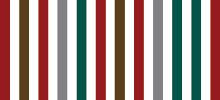25 June, 2009
We begin our round of studio visits, appropriately, by calling on Soeki Irodikromo, one of the elder figures of the Surinamese art scene. His paintings, ceramics, and batik work draw on Javanese myth and visual traditions but also on the methods and style of the COBRA movement, which he studied at close quarters when he was an art student in the Netherlands in the 1960s. For forty years, Soeki--everyone in Paramaribo refers to him by his first name--has thoughtfully but undogmatically explored notions of Suriname's cultural diversity and hybridity, and the country's uncertain place within the Caribbean cultural zone.
Soeki Irodikromo, 25 June, 2009. Photo by Nicholas Laughlin
Chris visited Soeki's studio last time he was in Suriname, and remembers being fascinated by a large painting created for Carifesta 2006. He hopes to see it again.
Soeki's wife greets us at the front gate and shows us past a collection of small cacti (sheltered by a big striped umbrella) into an airy verandah screened by palms and other potted plants. Just above us a nervous small songbird flits about its bamboo cage. Soeki appears in the doorway, smiling, hands clasped. He asks if we will have coffee, then ducks inside to fetch it.
"He's so fit!" Chris says. Soeki is small, wiry, energetic, dressed in a batik t-shirt. Chris remembers on his previous visit they spoke about fishing in the mouth of the Suriname River.
Soeki appears again, with little cups of coffee, and we sit around a low table made from the section of a massive tree trunk. Chris asks about the caged bird. It is a twa twa, Soeki says--"the best kind of bird in Suriname." The picolet is second best. Last week someone stole his picolet from the verandah. Now he keeps the front gate locked.
Thomas talks about our project, the exhibition and book. Soeki listens gravely. Chris asks about the Carifesta painting he saw five years ago. It was sold to a collector in the Netherlands, Soeki says, like much of his work. He opens a copy of the catalogue of his work published in 2005 and leafs through to the final section. The painting Chris remembers isn't in the book, but others from the series are.
Eventually we ask if we can see some of his most recent work, and Soeki shows us inside. Hanging on his living room wall is a new painting called Ontmoeting--"The Meeting"--finished just "yesterday", Soeki says. Chris is immediately intrigued. While he talks to Soeki about the work, I slip into his studio at the back of the house, behind the kitchen. Several canvases-in-progress stand on easels, or propped on a ledge along the wall. Soeki, Chris, and Thomas follow me into the room. Chris has shared the idea of the bridge as a thematic construct for the project. Soeki, warming to the idea, is talking about the Javanese community as a bridge between Afro- and Indo-Surinamese.
Soeki's studio, 25 June, 2009. Photo by Nicholas Laughlin
In the taxi, heading back to central Paramaribo, Chris muses over the coincidental appropriateness of finding Ontmoeting prominently displayed in Soeki's house. Because of course a bridge is a kind of meeting, and Soeki's work is a bridge between late European Modernism and a cultural discourse particular to Suriname. Can we find, Chris wonders, a bridge between ideas about the role of painting among artists of Soeki's generation, and the work of contemporary Surinamese artists working in the medium of paint on canvas?
Other resources:
= Article on Soeki Irodikromo in Dutch Wikipedia
= Article on Soeki at Readytex Gallery website
= Marieke Visser on Soeki's 2005 show at the Readytex Gallery
Diary: visiting Soeki Irodikromo
Saturday, July 18, 2009
at 3:08 PM
Labels: diary, laughlin, soeki irodikromo
Subscribe to:
Post Comments (Atom)






0 comments:
Post a Comment